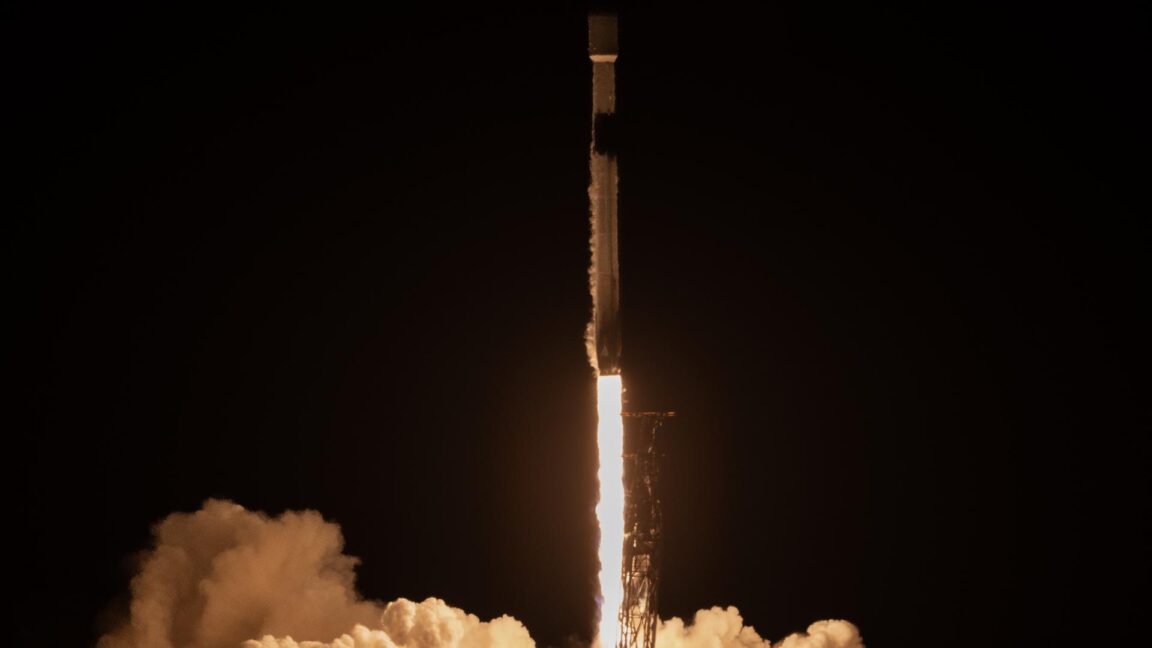THIS Unexpected Rug Trend Is Taking Over—Here's How to Style It
Pictured above: A dining room in Dallas, Texas, designed by Studio Thomas James.As you designa room at home, you may have specific ideas about the paint color, furniture placement, and even the lighting scheme your space requires to truly sing. But, if you're not also considering what type of rug will ground the entire look, this essential room-finishing touch may end up feeling like an afterthought. After all, one of the best ways to ensure your space looks expertly planned from top to bottom is to opt for a rug that can anchor the whole space—and, in many cases, that means a maximalist rug.A maximalist-style rug, or one that has a bold color, an abstract or asymmetrical pattern, an organic shape, distinctive pile texture, or unconventional application, offers a fresh answer to the perpetual design question, "What is this room missing?" Instead of defaulting to a neutral-colored, low-pile rug that goes largely unnoticed, a compelling case can be made for choosing a design that functions more as a tactile piece of art. Asha Chaudhary, the CEO of Jaipur, India-based rug brand Jaipur Living, has noticed many consumers moving away from "safe" interiors and embracing designs that pop with personality. "There’s a growing desire to design with individuality and soul. A vibrant or highly detailed rug can instantly transform a space by adding movement, contrast, and character, all in one single piece," she says.Ahead, we spoke to Chaudhary to get her essential tips for choosing the right maximalist rug for your design style, how to evaluate the construction of a piece, and even why you should think outside the box when it comes to the standard area rug shape. Turns out, this foundational mainstay can be a deeply personal expression of identity.Related StoriesWhen a Maximalist Rug Makes SenseJohn MerklAn outdoor lounge in Healdsburg, California, designed by Sheldon Harte.As you might imagine, integrating a maximalist rug into an existing aesthetic isn't about making a one-to-one swap. You'll want to refine your overall approach and potentially tweak elements of the room already in place, too."I like to think about rugs this way: Sometimes they play a supporting role, and other times, they’re the hero of the room," Chaudhary says. "Statement rugs are designed to stand out. They tell stories, stir emotion, and ground a space the way a bold piece of art would."In Chaudhary's work with interior designers who are selecting rugs for clients' high-end homes, she's noticed that tastes have recently swung toward a more maximalist ethos."Designers are leaning into expression and individuality," she says. "There’s growing interest in bold patterns, asymmetry, and designs that reflect the hand of the maker. Color-wise, we’re seeing more adventurous palettes: think jades, bordeauxes, and terracottas. And there’s a strong desire for rugs that feel personal, like they carry a story or a memory." Jaipur LivingJaipur Living’s Manchaha rugs are one-of-a-kind, hand-knotted pieces woven from upcycled hand-spun yarn that follow a freeform design of the artisan’s choosing.Jaipur LivingJaipur Living is uniquely positioned to fulfill the need for one-of-a-kind rugs that are not just visually striking within a space, but deeply meaningful as well. The brand's Manchaha collectioncomprises rugs made of upcycled yarn, each hand-knotted by rural Indian artisans in freeform shapes that capture the imagination."Each piece is designed from the heart of the artisan, with no predetermined pattern, just emotion, inspiration, and memory woven together by hand. What excites me most is this shift away from perfection and toward beauty that feels lived-in, layered, and real," she adds.There’s a strong desire for rugs that feel personal, like they carry a story or a memory.Related StoryHow to Choose the Right Maximalist RugBrittany AmbridgeDesign firm Drake/Anderson reimagined this Greenwich, Connecticut, living room. Good news for those who are taking a slow-decorating approach with their home: Finding the right maximalist rug for your space means looking at the big picture first."Most shoppers start with size and color, but the first question should really be, 'How will this space be used?' That answer guides everything—material, construction, and investment," says Chaudhary.Are you styling an off-limits living room or a lively family den where guests may occasionally wander in with shoes on? In considering your materials, you may want to opt for a performance-fabric rug for areas subject to frequent wear and tear, but Chaudhary has a clear favorite for nearly all other spaces. "Wool is the gold standard. It’s naturally resilient, stain-resistant, and has excellent bounce-back, meaning it recovers well from foot traffic and furniture impressions," she says. "It’s also moisture-wicking and insulating, making it an ideal choice for both comfort and durability."As far as construction goes, Chaudhary breaks down the most widely available options on the market: A hand-knotted rug, crafted by tying individual knots, is the most durable construction and can last decades, even with daily use.Hand-tufted rugs offer a beautiful look at a more accessible price point, but typically won’t have the same lifespan. Power-loomed rugs can be a great solution for high-traffic areas when made with quality materials. Though they fall at the higher end of the price spectrum, hand-knotted rugs aren't meant to be untouchable—after all, their quality construction helps ensure that they can stand up to minor mishaps in day-to-day living. This can shift your appreciation of a rug from a humble underfoot accent to a long-lasting art piece worthy of care and intentional restoration when the time comes. "Understanding these distinctions helps consumers make smarter, more lasting investments for their homes," Chaudhary says. Related StoryOpting for Unconventional Applications Lesley UnruhSarah Vaile designed this vibrant vestibule in Chicago, Illinois.Maximalist rugs encompass an impressively broad category, and even if you already have an area rug rolled out that you're happy with, there are alternative shapes you can choose, or ways in which they can imbue creative expression far beyond the floor."I’ve seen some incredibly beautiful applications of rugs as wall art. Especially when it comes to smaller or one-of-a-kind pieces, hanging them allows people to appreciate the detail, texture, and artistry at eye level," says Chaudhary. "Some designers have also used narrow runners as table coverings or layered over larger textiles for added dimension."Another interesting facet of maximalist rugs is that you can think outside the rectangle in terms of silhouette."We’re seeing more interest in irregular rug shapes, think soft ovals, curves, even asymmetrical outlines," says Chaudhary. "Clients are designing with more fluidity and movement in mind, especially in open-plan spaces. Extra-long runners, oversized circles, and multi-shape layouts are also trending."Ultimately, the best maximalist rug for you is one that meets your home's needs while highlighting your personal style. In spaces where dramatic light fixtures or punchy paint colors aren't practical or allowed, a statement-making rug is the ideal solution. While trends will continue to evolve, honing in on a unique—even tailor-made—design will help ensure aesthetic longevity. Follow House Beautiful on Instagram and TikTok.
#this #unexpected #rug #trend #taking
THIS Unexpected Rug Trend Is Taking Over—Here's How to Style It
Pictured above: A dining room in Dallas, Texas, designed by Studio Thomas James.As you designa room at home, you may have specific ideas about the paint color, furniture placement, and even the lighting scheme your space requires to truly sing. But, if you're not also considering what type of rug will ground the entire look, this essential room-finishing touch may end up feeling like an afterthought. After all, one of the best ways to ensure your space looks expertly planned from top to bottom is to opt for a rug that can anchor the whole space—and, in many cases, that means a maximalist rug.A maximalist-style rug, or one that has a bold color, an abstract or asymmetrical pattern, an organic shape, distinctive pile texture, or unconventional application, offers a fresh answer to the perpetual design question, "What is this room missing?" Instead of defaulting to a neutral-colored, low-pile rug that goes largely unnoticed, a compelling case can be made for choosing a design that functions more as a tactile piece of art. Asha Chaudhary, the CEO of Jaipur, India-based rug brand Jaipur Living, has noticed many consumers moving away from "safe" interiors and embracing designs that pop with personality. "There’s a growing desire to design with individuality and soul. A vibrant or highly detailed rug can instantly transform a space by adding movement, contrast, and character, all in one single piece," she says.Ahead, we spoke to Chaudhary to get her essential tips for choosing the right maximalist rug for your design style, how to evaluate the construction of a piece, and even why you should think outside the box when it comes to the standard area rug shape. Turns out, this foundational mainstay can be a deeply personal expression of identity.Related StoriesWhen a Maximalist Rug Makes SenseJohn MerklAn outdoor lounge in Healdsburg, California, designed by Sheldon Harte.As you might imagine, integrating a maximalist rug into an existing aesthetic isn't about making a one-to-one swap. You'll want to refine your overall approach and potentially tweak elements of the room already in place, too."I like to think about rugs this way: Sometimes they play a supporting role, and other times, they’re the hero of the room," Chaudhary says. "Statement rugs are designed to stand out. They tell stories, stir emotion, and ground a space the way a bold piece of art would."In Chaudhary's work with interior designers who are selecting rugs for clients' high-end homes, she's noticed that tastes have recently swung toward a more maximalist ethos."Designers are leaning into expression and individuality," she says. "There’s growing interest in bold patterns, asymmetry, and designs that reflect the hand of the maker. Color-wise, we’re seeing more adventurous palettes: think jades, bordeauxes, and terracottas. And there’s a strong desire for rugs that feel personal, like they carry a story or a memory." Jaipur LivingJaipur Living’s Manchaha rugs are one-of-a-kind, hand-knotted pieces woven from upcycled hand-spun yarn that follow a freeform design of the artisan’s choosing.Jaipur LivingJaipur Living is uniquely positioned to fulfill the need for one-of-a-kind rugs that are not just visually striking within a space, but deeply meaningful as well. The brand's Manchaha collectioncomprises rugs made of upcycled yarn, each hand-knotted by rural Indian artisans in freeform shapes that capture the imagination."Each piece is designed from the heart of the artisan, with no predetermined pattern, just emotion, inspiration, and memory woven together by hand. What excites me most is this shift away from perfection and toward beauty that feels lived-in, layered, and real," she adds.There’s a strong desire for rugs that feel personal, like they carry a story or a memory.Related StoryHow to Choose the Right Maximalist RugBrittany AmbridgeDesign firm Drake/Anderson reimagined this Greenwich, Connecticut, living room. Good news for those who are taking a slow-decorating approach with their home: Finding the right maximalist rug for your space means looking at the big picture first."Most shoppers start with size and color, but the first question should really be, 'How will this space be used?' That answer guides everything—material, construction, and investment," says Chaudhary.Are you styling an off-limits living room or a lively family den where guests may occasionally wander in with shoes on? In considering your materials, you may want to opt for a performance-fabric rug for areas subject to frequent wear and tear, but Chaudhary has a clear favorite for nearly all other spaces. "Wool is the gold standard. It’s naturally resilient, stain-resistant, and has excellent bounce-back, meaning it recovers well from foot traffic and furniture impressions," she says. "It’s also moisture-wicking and insulating, making it an ideal choice for both comfort and durability."As far as construction goes, Chaudhary breaks down the most widely available options on the market: A hand-knotted rug, crafted by tying individual knots, is the most durable construction and can last decades, even with daily use.Hand-tufted rugs offer a beautiful look at a more accessible price point, but typically won’t have the same lifespan. Power-loomed rugs can be a great solution for high-traffic areas when made with quality materials. Though they fall at the higher end of the price spectrum, hand-knotted rugs aren't meant to be untouchable—after all, their quality construction helps ensure that they can stand up to minor mishaps in day-to-day living. This can shift your appreciation of a rug from a humble underfoot accent to a long-lasting art piece worthy of care and intentional restoration when the time comes. "Understanding these distinctions helps consumers make smarter, more lasting investments for their homes," Chaudhary says. Related StoryOpting for Unconventional Applications Lesley UnruhSarah Vaile designed this vibrant vestibule in Chicago, Illinois.Maximalist rugs encompass an impressively broad category, and even if you already have an area rug rolled out that you're happy with, there are alternative shapes you can choose, or ways in which they can imbue creative expression far beyond the floor."I’ve seen some incredibly beautiful applications of rugs as wall art. Especially when it comes to smaller or one-of-a-kind pieces, hanging them allows people to appreciate the detail, texture, and artistry at eye level," says Chaudhary. "Some designers have also used narrow runners as table coverings or layered over larger textiles for added dimension."Another interesting facet of maximalist rugs is that you can think outside the rectangle in terms of silhouette."We’re seeing more interest in irregular rug shapes, think soft ovals, curves, even asymmetrical outlines," says Chaudhary. "Clients are designing with more fluidity and movement in mind, especially in open-plan spaces. Extra-long runners, oversized circles, and multi-shape layouts are also trending."Ultimately, the best maximalist rug for you is one that meets your home's needs while highlighting your personal style. In spaces where dramatic light fixtures or punchy paint colors aren't practical or allowed, a statement-making rug is the ideal solution. While trends will continue to evolve, honing in on a unique—even tailor-made—design will help ensure aesthetic longevity. Follow House Beautiful on Instagram and TikTok.
#this #unexpected #rug #trend #taking




2 Comentários
·0 Anterior







